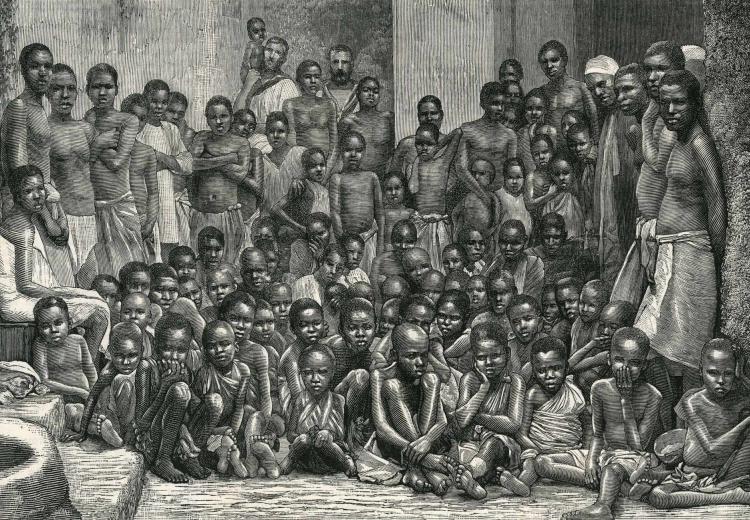Slave Voyages

Transatlantic Slave Trade Database
Library of Congress
Slave Voyages: The Transatlantic Slave Trade Database is an NEH-funded digital humanities project that represents decades of careful research and documentation. Scholars worked to collect information about the voyages of enslaved people, first across the Atlantic and then within the Americas, and to transfer unpublished archival records into machine-readable data.
This data can be downloaded by researchers and students around the world, or viewed in various formats on the project's website. In addition to the databases of voyages that form the core of the project, recently, the project team has incorporated an archive of images, a database of the names of enslaved people, a 3-D animation of a slave ship, and other visualizations. There is also a series of essays about the slave trade that address both the micro—individual experiences of captivity and enslavement—and macro—the centuries-long evolution of the slave trade(s).
The databases can, of course, be used as sources for research projects. However, they also offer an opportunity to reflect on the challenges of historical research and representation more broadly: how can we understand histories of individuals and phenomena when surviving documentation is most often from the perspective of the enslaver, the plantation owner, the accountant?
Classroom Connections
After students have studied one or more slave narratives, ask them to explore the Slave Voyages site. The Trans-Atlantic Database is the most robust and has the most visualization options. Students should examine the database itself, as well as the different data visualizations on the site. The following questions can guide reflection.
- What information is conveyed in the slave narrative? In the database?
- How is this information conveyed?
- What do you think is the purpose of slave narratives? The Slave Voyages databases?
- What sources were used to write slave narratives? To build the Slave Voyages databases?
- What are some of the strengths and limitations of each form of representing slavery and the lives of enslaved people?
- How has each representation of slavery shaped your knowledge and perceptions of the institution?
Students can analyze a different form of representing enslaved persons' lives in EDSITEment's collection of lesson plans about slave narratives.
- Twelve Years a Slave: Analyzing Slave Narratives (grades 9-12)
- Perspective on the Slave Narrative (grades 9-12)
-
Frederick Douglass’s Narrative: Myth of the Happy Slave (grades 9-12)
-
Slave Narratives: Constructing U.S. History through Analyzing Primary Sources (grades 6-8)
